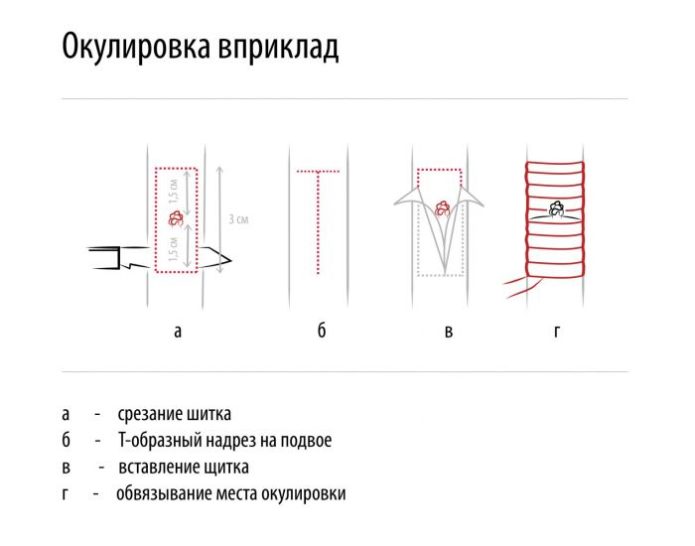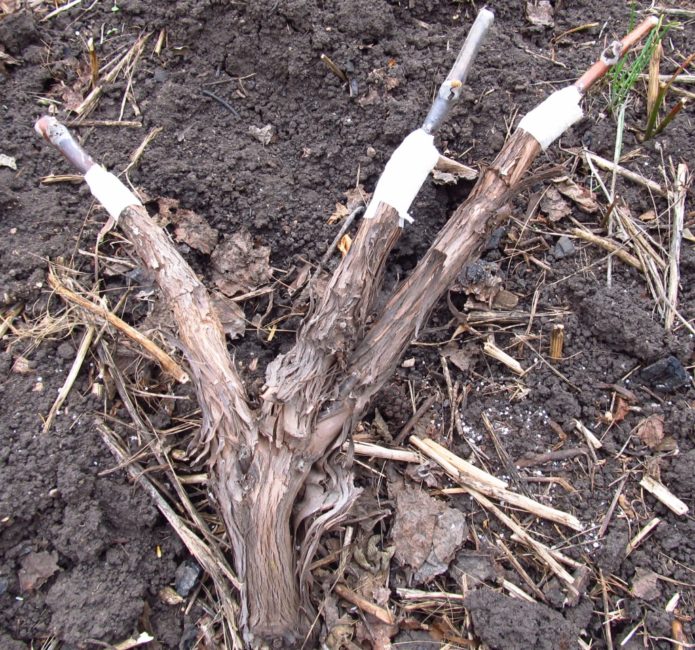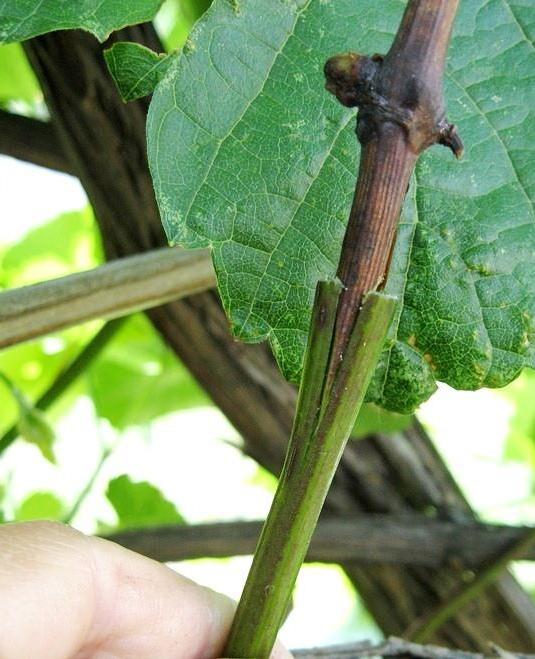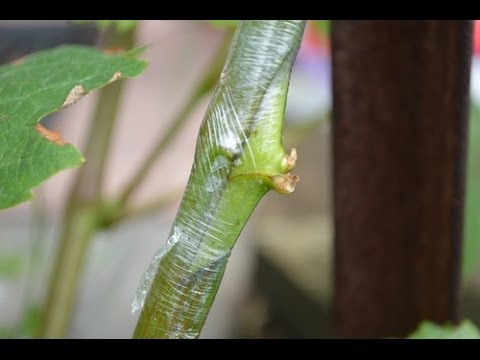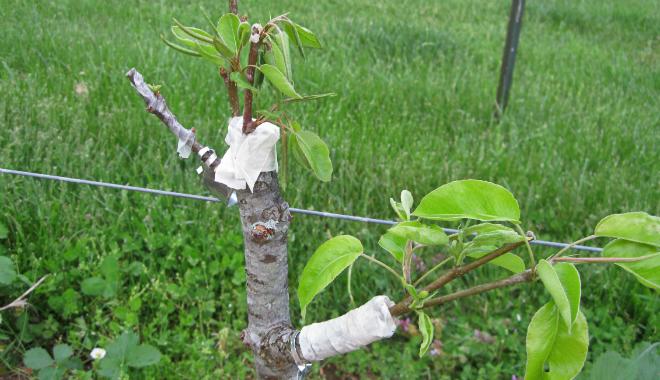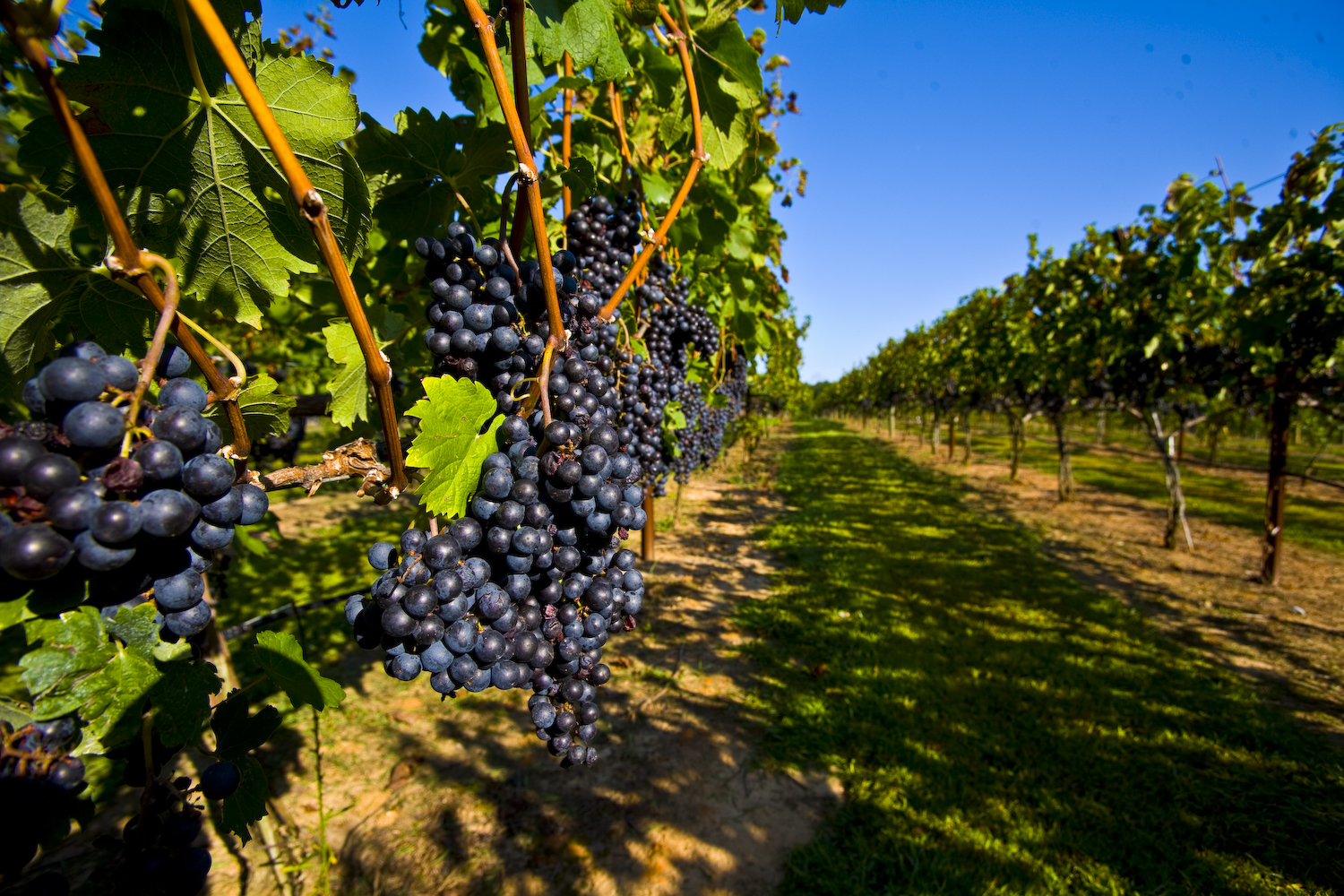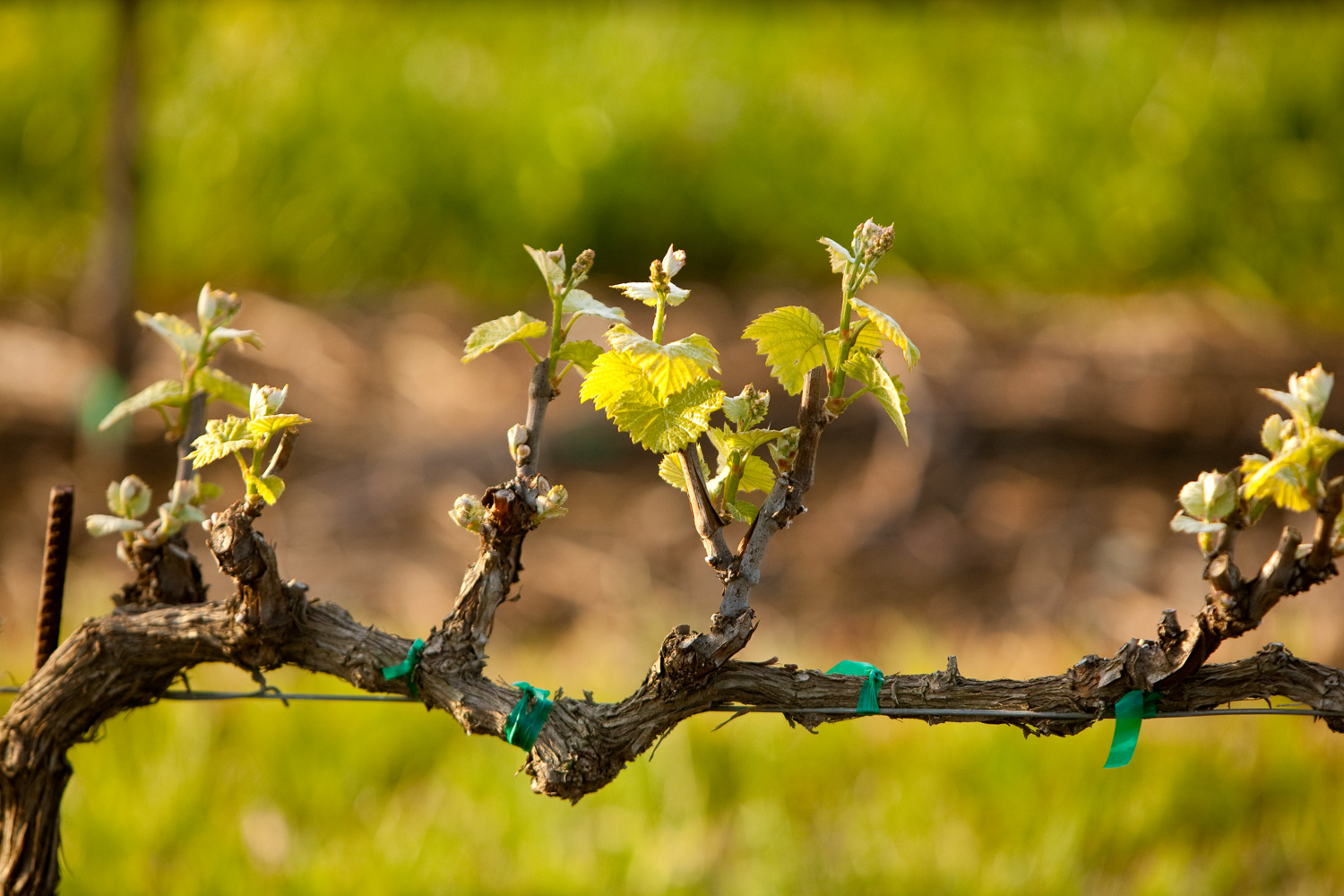The grafting of fruit trees has been carried out for so long and successfully that it raises no questions. And many have not even heard about grafting grapes, although it is not at all difficult to do it. Moreover, grapes can be grafted in one way or another almost at any time of the year, even in winter. But each technique has its own time.
Content
Grape grafting terms
Grafting is understood as an operation aimed at splicing parts of two different organisms - a scion and a rootstock. The goals of such an operation may be different, but if it is successful, the new plant will have all the features of the "parent" from which the graft was taken. And the role of the rootstock is to supply nutrients and moisture to the new bush.
The connection of the scion with the stock can be carried out in a variety of ways, but the most common are copulation and budding techniques. In the first case, a cutting is grafted to the stock, that is, a piece of shoot with several buds.
In the second, a separately taken kidney with a small piece (shield) around it.
Such a simple classification does not limit all the methods of grafting, but it gives an idea of what needs to be taken from that valuable plant, the characteristics of which I would like to get in a newly created organism: methods "for the bark", "for splitting" and others are not formally copulation , but also carried out using a cutting.
In viticulture, even winter grafting is used, which is carried out not in the garden, but at home, right on the table, which is why it is called desktop. We will very briefly consider those methods that can be used right on the site, that is, methods of grafting into a growing grape bush. These are inoculations in the stem of the bush (and there are also grafts in the root), which are usually carried out in the "splitting" method in the spring, before bud break, and "green" inoculations, performed in a more extended period during the growing season of the grape bush. The graft can be either green (vegetative) or lignified, that is, a cuttings cut from last year's vine.
One of the classifications, taking into account the degree of maturity of the spliced parts, provides the following options.
- “Black to black” - when both the scion and the stock are in a “half-asleep” state. This vaccination is carried out in early spring. As a scion, cuttings harvested last season and stored in the cellar are used.
- "Black to green". Cuttings with buds beginning to bloom are grafted onto a bush, whose shoots are already growing, but not yet lignified. A stalk of last year is grafted onto this year's green young vine. This method, used in summer, is the least reliable.
- "Green to green". Both the scion and the rootstock are immature, appearing only in the current year. Performed in summer and early autumn (before leaf fall).
For any vaccination options, it is necessary to strictly observe the terms associated with the phases of development of the grape bush (the beginning of sap flow, active vegetation, lignification of the vine, etc.), otherwise the idea of inoculation will be doomed to failure.
Timing of vaccination black on black
Since such an inoculation involves the fusion of a lignified cuttings of the desired variety with a lignified shoot of a growing bush, its timing should be such that immediately after the procedure is completed, fusion of the parts to be joined begins. And it is possible if the juice has already gone through the vine. In most regions, this happens from the end of April. After the start of sap flow, after a couple of weeks, the buds may begin to bloom, and for such a vaccination, they should only be swollen. Therefore, there is not much time for the black-on-black vaccination; by mid-May, the work should be completed.
Such an inoculation is carried out by methods of simple or improved copulation (with a tongue). It is necessary to select cuttings that are ideally suited to the thickness of the rootstock material, soak them in water, make oblique cuts on both participants in the vaccination, connect and firmly tie the vaccination site. The vaccination should be done in cloudy weather or in the evening, all operations should be performed as quickly and correctly as possible so that the sections do not dry out.
Caring for grafted grapes consists in removing overgrowths and emerging extra shoots. The bandage must be loosened as the new shoot grows, and when the fusion is complete, remove. When the grafted shoots reach a length of 25–30 cm, they are pinched. If inflorescences appear, they are removed.
Video: grafting black to black
Timing of vaccination black on green
The combined black-to-green grafting is carried out with a lignified cuttings on a green shoot. This operation can be done throughout the summer, while the young vine is still growing intensively. But last year's cuttings are difficult to preserve until summer, so they are waxed. First, in the spring, they are soaked in water, kept in growth stimulants, dried, cut into pieces with 2 buds and dipped in liquid paraffin. This can be done at a paraffin temperature of 80 ° C, after which the cuttings should be immediately immersed in cold water. Such "canned" cuttings in a plastic bag are well stored in the cellar.
The inoculation is carried out by the "cleavage" method. To do this, the cutting in the lower part is cut into a wedge, soaked, and in a green vine on a growing bush, a split is made in the right place. The “desired spot” is usually above the third node from the base of the shoot. Cut off the shoot in this place, split it in the middle, insert the stalk into the split, tie it with a strip of film. As the shoot grows, the harness is loosened, and removed in autumn.
At the end of May, when young shoots are still difficult to split due to their weakness, grafting is also possible by a simple copulation method (“into the butt”). It is not difficult to do it, but a few days before vaccination, all the buds on the young shoot must be blinded, and the leaves must be torn off so that the wounds can dry out before the procedure. This vaccination is carried out completely identical to the black-on-black vaccination.
Timing of grafting in a bush stem
As a matter of fact, grafting into the stem of a grape bush, performed on a fruiting plant, can also be classified as "black to black". At the same time, the entire aerial part is completely removed, and only old roots remain to feed the new bush.
This grafting is done when the bush is dormant, that is, from mid-autumn to early spring. But, since it is extremely difficult to do this in winter, the real terms of the operation are limited in late autumn (approximately from mid-October, depending on the region) and early spring (approximately until mid-April, starting from the time when severe night frosts pass).It is a little easier to do this in the spring, because after the winter vaccination, the bush must be very well covered for the winter, and in the spring, a preventive cover with nonwoven material is enough.
The most common variant of such an operation is underground vaccination. To carry it out, an air temperature in the root zone of about 10 aboutC, but sap flow at this moment should only begin, without reaching the so-called crying. The optimal situation is swollen buds on the scion and a complete state of rest in the buds on the rootstock.
To carry out the grafting at a depth of 10–15 cm, the old bush is completely cut down and the cuttings are grafted into the remainder of the stem using the “split” method, making the split to a depth of 3 cm. The cuttings are taken so that after grafting it remains completely underground. If the bole under the ground is so bent that inoculation into the split is impossible, the grafting into the butt is performed.

For grafting into a bole, you have to cut off the entire aerial part and dig up the ground to the roots
Dates of budding
Budding, or kidney grafting, is performed on a green vine that has grown this year. Such an inoculation is carried out in the summer: from the end of May to July (sometimes the first days of August can also be captured). Grafts in May - early June can be taken from last year's lignified shoots, and later - from this year's shoots. However, the use of herbaceous buds reduces the rate of grafting. Rootstock vines during budding should be in a state of active growth.
Depending on the duration of the vaccination, its receptions also differ. And if the technique of budding itself is the same, then they act differently with the rootstock vine. In the case of early vaccinations (end of May - end of June) above the site of vaccination, the shoot is completely cut off so that the grafted kidney in the current year not only takes root, but also blossoms, gives a new shoot. With later budding, the opposite problem is faced - the grafted kidney must remain dormant until the spring of next year.
Oculation is carried out in various ways: behind the bark into T-shaped or longitudinal cuts, into the flaps, into the gap, into the butt, but these differences are insignificant. In any case, it is necessary to ensure at least minimal contact between the cambial layers of the scutellum with the bud of the scion and the green shoot of the rootstock. The site of inoculation must be properly wrapped with foil, leaving the grafted kidney open. After 30–40 days, the harness is removed. Shoots grown from the buds of the scion are tied to supports: a trellis or specially driven pegs.
Video: grafting with a bud
Grape grafting terms in the regions
In general, the above terms of grape grafting differ little depending on the region; the differences can be no more than 2-3 weeks, but the phase of development of the grape bush should be the one that is necessary in each variant of the vaccination.
For example, in Crimea, the traditional technique is grafting with last year's cuttings into this year's green vine, and the best time for this is from May 5 to May 15. During this period in the Crimea, you can already use green cuttings. In May, in the conditions of the peninsula, the green vine is no longer quite herbaceous, therefore it is quite suitable for inoculation into it, especially by copulation, including improved copulation. The best results are obtained by grafting on the green shoots of 2-3-year-old bushes of vigorous grape varieties.
In the more northern regions of our country and neighboring republics, the terms may be slightly shifted, but I must say that in the conditions of central Russia and in Belarus, grape grafting is generally not as widespread as in the south. This is connected, of course, with more severe conditions, and grafting does not always increase the frost resistance of plants.
In Ukraine, approximately at the latitude of Kiev or Dnepropetrovsk, black-on-black vaccinations are more often performed, and the timing of such an operation is from the end of March to the end of April.Another option - a green cuttings in a green young shoot - is used in the second half of May, ending such inoculations at the very beginning of summer.
Video: grape grafting timing
Grafting of grapes is a very common operation in the wine-growing regions, but in the north of our country and in the middle lane, where grapes are not yet considered as a common crop, grafting is rarely used. Winegrowers know a variety of techniques for this operation, and different options can be applied both in summer and at other times of the year.

